Estimated reading time: 9 minutes
You spent all of this time stocking your pantry with canned goods and non-perishables, and the last thing you want to do is toss out food because the expiration date arrives. Do the food expiration date codes really mean that one day the food is good, and the next day the food is bad?
Should you toss out a can of tomato sauce because it’s one week past the date code? Is it safe to eat those canned peaches even though it’s two weeks past the date? Expired means it’s bad or spoiled, right?
Want to save this post for later? Click Here to Pin It On Pinterest!
Not so fast, Sally! In normal times, you might toss out those cans and not stress about the $1 you lost, but in survival situations, each can is essential, so you need to know how to read the expiration date codes and understand non-perishable food safety.
How to Read Expiration Date Codes
Finding the code can be hard; it depends on the product you’re reading. The United States doesn’t have a regulated system for coding except for baby food and infant formula. So that means all other companies do so on a voluntary basis.
There are two types of food expiration date codes on products:
Open Dating
This date uses standard time or calendar dates. These dates are chosen by the manufacturing company, and it’s up to the consumer to decide whether or not to follow them.
Use-by or Sell-by
Following the opening date, you’ll find a label with “use-by,” “sell-by,” or “pull-by.” These dates are meant for customers to let them know the estimated date when the product will start to deteriorate, and they also let the grocery stores know how long they should keep the products on the shelves.
When you look for these dates, check the bottom, the sides, the lid, or the neck of the containers. Most are stamped on and can be hard to read, depending on where the company places them.
Another option that you could find on the product is called closed coding. It’s another way to list expiration dates on products, typically by a string of numbers and some letters placed on the top or the bottom of products. Closed coding is not used by consumers; it’s meant to track inventory by manufacturers.
It’s also important to know that many products have a closed code and an open-date code. So, if your product doesn’t have the words “use-by” or “best-by”, it’s a closed code and doesn’t pertain to the food quality.
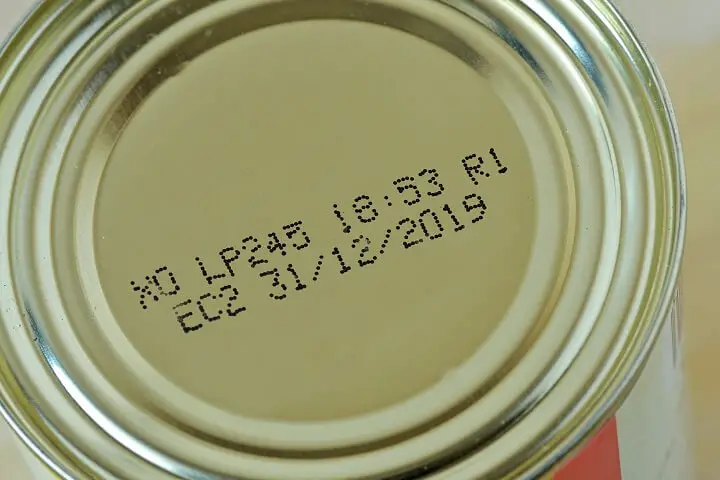
How To Read Closed Coded Labels
These little labels can tell you a lot about the product you buy, but reading them can be tricky. There is no single system used, so manufacturers come up with their own string of numbers and letters.
Here are some things to help you read closed coded labels on food products:
1. Typically, letters signify the month. January would be “A” and “L” stands for December. That can be confusing if you think they use an abbreviation for each month – they typically don’t. After the letter, there will be a set of numbers used to indicate the day and year, but in some cases, the year comes before the letter.
- An example would be a code that reads “D1617,” which stands for April 16, 2017.
2. Other companies use 1-9 to indicate January to September, then they give October, November, and December the first letter of their name.
3. Another option is that the closed code could be made entirely of numbers in the standard order used for dates, such as MMDDYY or YYMMDD. Most six-digit codes are the month-day-year code.
- These are the most common code to find on food products.
- For example, 101418 refers to October 14, 2018.
- If they use the year-month-date sequence, the label might read “181014” for October 14, 2018.
4. In other cases, the company might use the Julian Calendar, assuming a number for each day from 1 to 365. That can be quite confusing since we never think of this option.
- This is most commonly used on eggs, but some canned good manufacturers use it as well.
- “001” stands for January 1st, and “365” stands for December 31st.
- If you find a three-digit code for 213, that refers to August 1st, but it would be hard to determine that on your own without a lot of counting.
Expiration Date Codes Aren’t An Exact Science
One thing that you should remember is that the expiration codes aren’t perfect or an exact science. Just because the code says “April 6, 2021,” doesn’t mean that the food will immediately turn bad on that day.
Food manufacturers understand that there are variables that mess with the expiration dates. The two main variables that will determine your canned food’s shelf life are:
Temperature Exposure
When foods, even foods that are properly preserved, are exposed to high temperatures, it will compromise them. You should never keep or store your canned goods in areas with high heat.
Another issue is large temperature variations. Small temperature variations are no big deal; it happens in nearly every type of storage unless you can afford temperature-controlled storage pantries, which are too expensive for most people.
When your canned foods are exposed to high temperatures then cold temperatures and back up again, it compromises the food’s shelf life. That’s why garages and attics are bad places to store food. Anywhere that is uninsulated or unheated can have large temperature fluctuations.
Whether The Can is Damaged or Not
You should always watch for any damage to your canned goods. Dented, dropped, or crushed cans risk the integrity of the food; it can damage the seal that prevents bacteria from entering.
Any damage increases the odds of air entering the can, increasing the risk of mold. The last thing you want to do is eat moldy food. That will make you very sick!
While food manufacturers can control the condition in which the cans leave their warehouse, that’s the extent that they can control. They understand this, so they tend to pick a conservative best-by date to decrease the risk of customers encountering spoiled, moldy food.
Can I Eat Food After the Food Expiration Date?
Yes, so long as it’s not too far past the expiration date and you stored the food properly. The “use-by” dates on canned foods are conservative and have more leeway on the consumer end than non-perishable foods. For example, milk is typically good seven days past the stamped sell-by date, and fresh meats have an even shorter shelf life.
Remember those dates on your canned goods aren’t expiration dates necessarily. They’re the dates that the company crafted and canned the food. It’s recommended that consumers eat their canned goods within two years of the purchase date, but that might be after the expiration date on the can. Companies like to be conservative to save their butts.
We know that people have opened canned foods several years or even decades after their dates to find that the food is perfectly fine! While it’s a good idea to eat the food in your pantry before the date, don’t toss it out if the expiration date comes and goes.
How to Properly Store Your Canned Goods
A lot of perfectly good food is wasted because people don’t know how to read food expiration date codes, and they don’t understand that the expiration dates are chosen conservatively. Learning how to properly store your canned goods can help you rest easy knowing that you’re doing everything you can to extend their shelf life.
Label The Cans Yourself
I recommend that you label all of the canned goods with the date that you purchased them, and keep in mind the recommended two-year shelf life. You also can write the date listed on the can as well.
Don’t Buy Dented Cans for Long-Term Storage
If you plan to use the canned goods within the next few weeks, buying dented cans isn’t a big deal. You can find damaged cans marked down in price, but if you’re stockpiling food, dented cans are a big no-no.
Always check for any signs of any type of damage, even minor. You don’t want to risk any bacterial growth when the canned goods will be in storage for years.
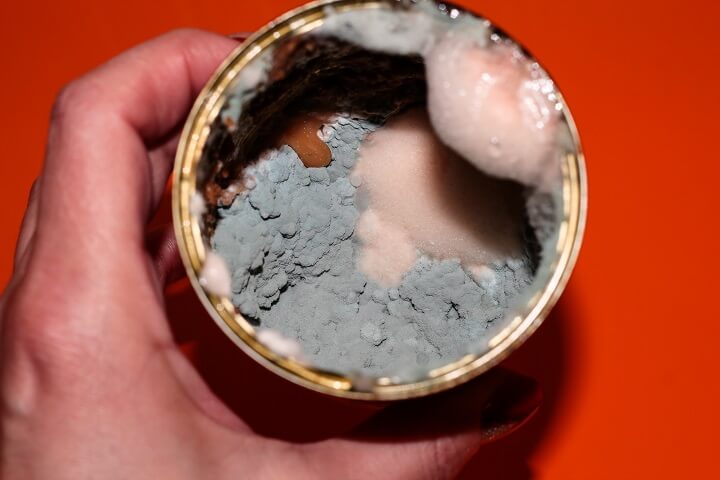
Store The Canned Goods at the Right Temperature
In an ideal world, you would store the food at 65℉. For every 15 degrees the temperature increases, you reduce the shelf life of the canned goods by 50%. The environment must be dry and dark as well.
Smell Before Using
Before you actually eat the food, make sure you smell anything that has gone beyond its expiration date. If you feel unsure about its scent, toss it out.
Look for Other Indicators That The Food is Bad
Scent isn’t the only sign that will let you know that the food is bad. Here are a few other things to keep an eye out for when using canned food past its expiration date.
- Any discoloration is a sign that the food might be contaminated. It’s wise to discard any food that is a strange color.
- If the jar or can spurts liquid out when you open it, that’s a typical sign that the food is bad.
- If you find mold growing on the food, it means that air was present in the can. You don’t know if bacteria were growing or not.
Final Thoughts
Food expiration date codes are purely voluntary for most companies, and they aren’t hard-fast rules. If the food smells and looks good past the date, it more than likely is safe to eat. Just make sure you store your stockpile food properly to extend its shelf life.
Like this post? Don't Forget to Pin It On Pinterest!



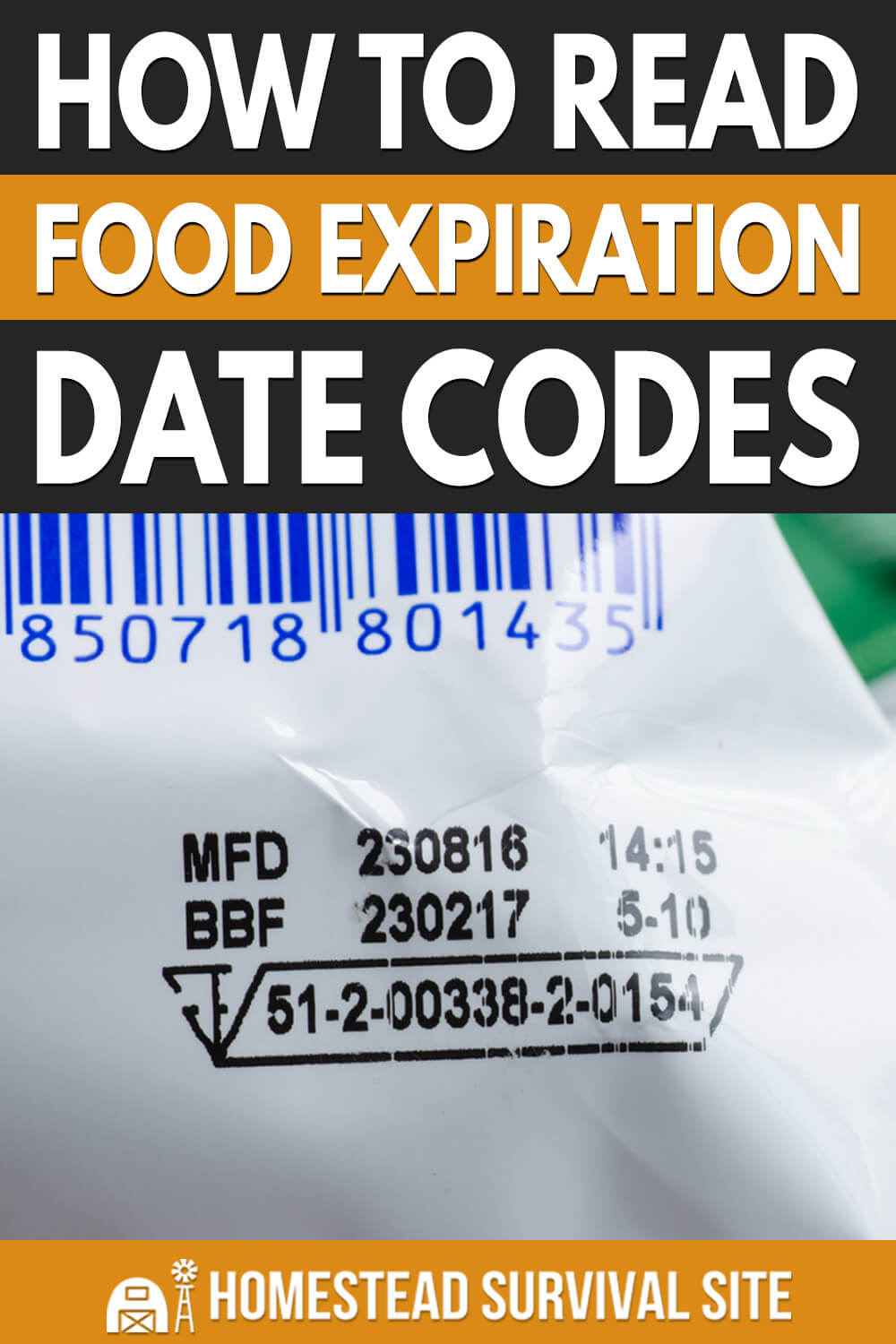



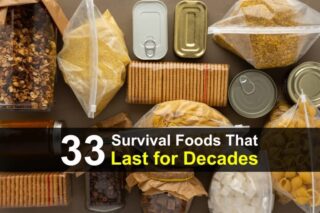
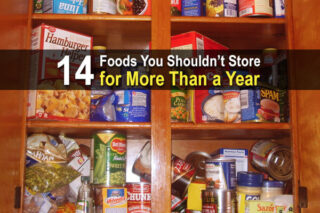
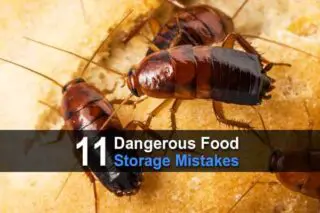



How would you read this? SFY57G8E00492028 It is on a box of ketchup packets. Thanks
How can I tell if this can of pork is expired. It reads.
APB5039. 10:41
EST 1701. 00934
Smoked paprika spice numbers are: M308295. Also the number: 0. 8983619523 4. Is one of these an expiration date? Thanks
How do I read an expiration code on Cheez-its? The code is P07112A1.
How do you read this code?
EST 1701 11:02
APB3040. 16867
What is expiration date on this?
HA15
5R9268
1002
Hi there, very helpful information here. I ran across your website on a Google search trying to find the meaning of the following code on a box of leavers graham crackers:
336/1PB12010
Below that and offset to the right it says:
06:08
Thanks!
Typo: that’s. Lieber’s Graham Crackers.
Is there a website that could helpr desipher codes by typing in the code?
CP06123C3
Does anyone know how to interpret this expiration code please?
How about this one: 22H21G03 21 05:01